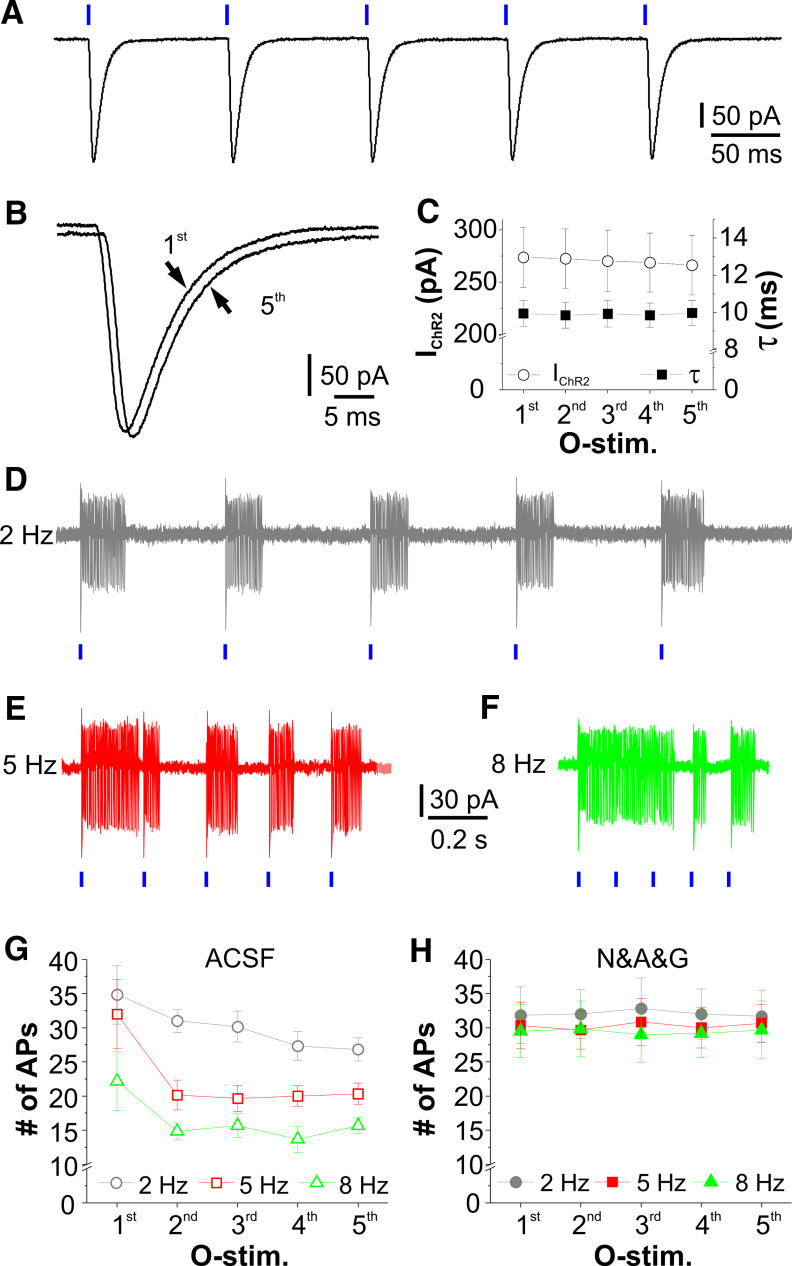Figure 9.
Rhythmic activation of ChR2 produces high-fidelity excitatory responses in CCKergic STCs. A, Typical voltage-clamp trace showing ChR2 current in a CCKergic STC evoked by five optical stimuli at 10 Hz in the presence of TTX to block action potential-dependent circuit influence. B, The first and the fifth ChR2 current (IChR2) traces superimposed to show the kinetic fidelity. C, Symbol plot showing consistency of the amplitude and decay time constant (τ) of ChR2 currents evoked by a train of five optical stimuli at 10 Hz in eight cells. D–F, Typical cell-attached recording traces showing spike responses of a CCKerigc STC to the patterned train stimulation at 2 Hz (D), 5 Hz (E), or 8 Hz (F). G, H, Average data plots showing the number of action potentials evoked by each of the five optical stimuli at three different frequencies in six STCs in ACSF (G) or in the presence of NBQX, APV, and gabazine (D&A&G, H).

